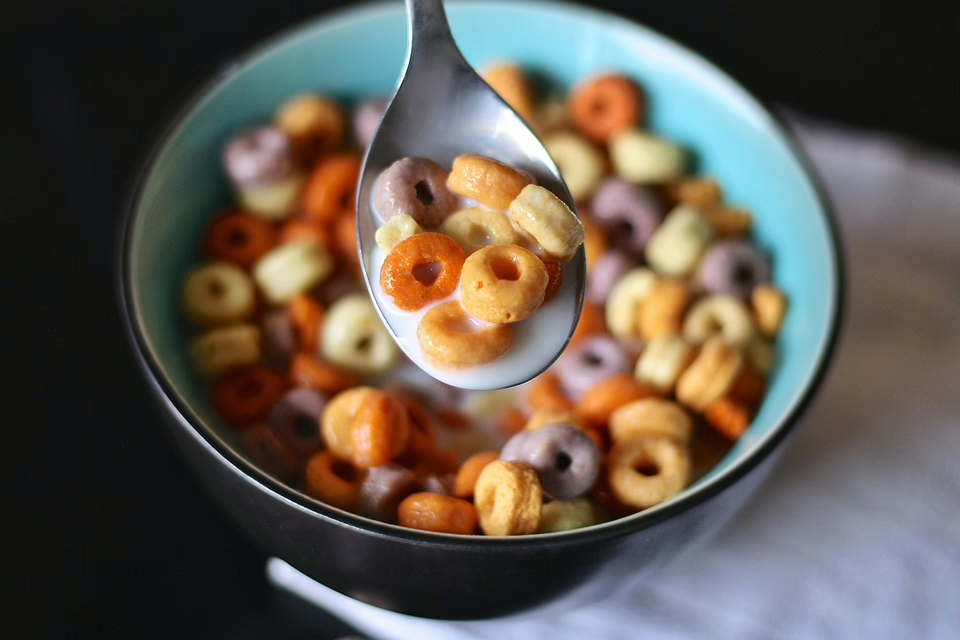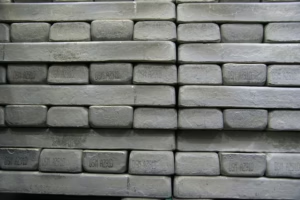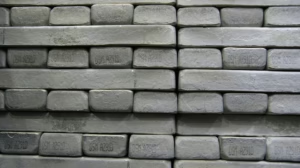Get Your Daily Fiber: Creative Recipes Featuring Fiber-Rich Foods
Fiber is an essential component of a healthy diet, playing a crucial role in digestion, reducing the risk of chronic diseases, and promoting overall health. Despite its importance, many people fall short of the recommended daily intake of fiber, which is about 25 grams for women and 38 grams for men[^1]. Incorporating fiber-rich foods into your meals can be both delicious and satisfying. This article will explore creative recipes featuring high-fiber ingredients, ensuring that you not only meet your fiber needs but also enjoy a variety of flavors and textures.
Understanding Fiber
Before diving into the recipes, it’s essential to understand the different types of fiber and their health benefits. Fiber is classified into two categories: soluble and insoluble.
Soluble Fiber
Soluble fiber dissolves in water and forms a gel-like substance in the digestive tract. It can help lower blood cholesterol levels and stabilize blood sugar. Foods rich in soluble fiber include:
- Oats
- Legumes (beans, lentils)
- Fruits (apples, oranges)
- Vegetables (carrots, sweet potatoes)
Insoluble Fiber
Insoluble fiber does not dissolve in water. It adds bulk to your stool and helps food pass more quickly through the digestive system, preventing constipation. Foods rich in insoluble fiber include:
- Whole grains (brown rice, whole wheat bread)
- Nuts and seeds
- Vegetables (cauliflower, green beans)
- Wheat bran
Health Benefits of Fiber
Fiber offers numerous health benefits, including:
- Digestive health: Promotes regular bowel movements and prevents constipation.
- Weight management: Increases feelings of fullness, helping to control appetite.
- Blood sugar control: Slows the absorption of sugar, aiding in blood sugar management.
- Heart health: Reduces cholesterol levels and lowers blood pressure.
- Reduced risk of chronic diseases: May decrease the risk of diseases like diabetes, heart disease, and certain types of cancer.
The importance of fiber cannot be overstated, making it essential to incorporate fiber-rich foods into our daily diet[^2].
Creative High-Fiber Recipes
Here are some delicious and creative recipes featuring high-fiber ingredients that you can easily incorporate into your meals. Each recipe is designed to be nutritious, satisfying, and, most importantly, fiber-rich.
1. Breakfast Quinoa Bowl
Ingredients:
- 1 cup cooked quinoa
- ½ cup Greek yogurt
- 1 banana, sliced
- ¼ cup berries (blueberries, raspberries, or strawberries)
- 1 tablespoon chia seeds
- Honey or maple syrup for drizzling
- A sprinkle of cinnamon
Instructions:
- In a bowl, layer the cooked quinoa and Greek yogurt.
- Top with sliced banana, berries, and chia seeds.
- Drizzle with honey or maple syrup and sprinkle with cinnamon.
- Enjoy a nutrient-packed breakfast that boasts both protein and fiber.
Fiber Content: Approximately 15 grams per serving[^3].
2. Lentil and Vegetable Stir-Fry
Ingredients:
- 1 cup cooked lentils
- 1 tablespoon olive oil
- 1 bell pepper, sliced
- 1 cup broccoli florets
- 1 carrot, julienned
- 2 cloves garlic, minced
- Soy sauce or tamari for seasoning
- Cooked brown rice or quinoa for serving
Instructions:
- In a large skillet, heat the olive oil over medium heat. Add garlic and sauté for a minute.
- Add the sliced bell pepper, broccoli, and carrot, stir-frying until tender.
- Stir in the cooked lentils and soy sauce. Cook for another 2-3 minutes, allowing flavors to meld.
- Serve over brown rice or quinoa for a hearty meal rich in fiber.
Fiber Content: Approximately 18 grams per serving^4.
3. Sweet Potato Black Bean Tacos
Ingredients:
- 2 medium sweet potatoes, cubed
- 1 can black beans, rinsed and drained
- 1 teaspoon cumin
- 1 teaspoon paprika
- Corn or whole wheat tortillas
- Toppings: avocado, salsa, cilantro, lime
Instructions:
- Preheat the oven to 400°F (200°C). Toss sweet potato cubes with olive oil, cumin, and paprika. Roast for 25-30 minutes or until tender.
- In a bowl, combine roasted sweet potatoes with black beans.
- Assemble tacos using tortillas as a base and top with avocado, salsa, and cilantro.
- Squeeze fresh lime juice over the top for added flavor.
Fiber Content: Approximately 14 grams per taco^5.
4. Oatmeal Energy Bites
Ingredients:
- 1 cup rolled oats
- ½ cup nut butter (peanut, almond, or sunflower)
- 1/3 cup honey or maple syrup
- ¼ cup ground flaxseed
- ¼ cup dark chocolate chips (optional)
- A pinch of salt
Instructions:
- In a bowl, combine all ingredients until thoroughly mixed.
- Roll into bite-sized balls and refrigerate for at least 30 minutes.
- Store in an airtight container for a quick, fiber-rich snack.
Fiber Content: Approximately 3 grams per energy bite^6.
5. Chickpea Salad with Feta and Avocado
Ingredients:
- 1 can chickpeas, rinsed and drained
- 1 avocado, diced
- 1 cup cherry tomatoes, halved
- ¼ cup feta cheese, crumbled
- 2 tablespoons olive oil
- Juice of 1 lemon
- Salt and pepper to taste
Instructions:
- In a large bowl, combine chickpeas, avocado, cherry tomatoes, and feta cheese.
- Drizzle with olive oil and lemon juice. Toss gently to combine.
- Season with salt and pepper, and serve immediately or refrigerate for later.
Fiber Content: Approximately 12 grams per serving^7.
6. Whole Grain Pasta with Spinach and White Beans
Ingredients:
- 8 ounces whole grain pasta
- 1 can white beans, rinsed and drained
- 2 cups fresh spinach
- 2 cloves garlic, minced
- 1 tablespoon olive oil
- Salt and pepper to taste
- Grated Parmesan cheese for serving (optional)
Instructions:
- Cook whole grain pasta according to package instructions. Drain and set aside.
- In a large pan, heat olive oil over medium heat. Add garlic and sauté for a minute.
- Stir in white beans and spinach, cooking until spinach is wilted.
- Add the cooked pasta, tossing everything together. Season with salt and pepper.
- Serve hot, garnished with Parmesan cheese if desired.
Fiber Content: Approximately 15 grams per serving^8.
7. Raspberry Chia Seed Pudding
Ingredients:
- 1 cup almond milk (or any milk of choice)
- 1/4 cup chia seeds
- 2 tablespoons maple syrup or honey
- 1 cup fresh raspberries (or any berry)
- A pinch of vanilla extract
Instructions:
- In a bowl, mix almond milk, chia seeds, sweetener, and vanilla. Stir well and let sit for about 10 minutes.
- Stir again to prevent clumping and refrigerate for at least 2 hours or overnight.
- Serve topped with fresh raspberries for a sweet and fiber-rich dessert.
Fiber Content: Approximately 10 grams per serving^9.
8. Vegetable Soup with Barley
Ingredients:
- 1 cup pearled barley
- 1 tablespoon olive oil
- 1 onion, diced
- 2 carrots, chopped
- 2 celery stalks, chopped
- 1 zucchini, diced
- 1 can diced tomatoes
- 6 cups vegetable broth
- 1 teaspoon dried oregano
- Salt and pepper to taste
Instructions:
- In a large pot, heat olive oil over medium heat. Sauté onion, carrots, and celery for about 5 minutes.
- Add zucchini, diced tomatoes, vegetable broth, barley, and oregano. Season with salt and pepper.
- Bring to a boil, then reduce heat and simmer until barley is tender, about 30 minutes.
- Serve hot, packed with fiber from the vegetables and barley.
Fiber Content: Approximately 12 grams per bowl^10.
9. Almond Flour Pancakes
Ingredients:
- 1 cup almond flour
- 2 eggs
- 1 banana, mashed
- 1/4 cup almond milk
- 1 teaspoon baking powder
- A pinch of salt
Instructions:
- In a bowl, mix almond flour, baking powder, and salt. In another bowl, whisk eggs, banana, and almond milk.
- Combine both mixtures and stir until well blended.
- Heat a nonstick skillet over medium heat and pour in batter to form pancakes.
- Cook until bubbles form, then flip and cook until golden brown. Serve with fresh fruit.
Fiber Content: Approximately 6 grams per serving^11.
10. Brussels Sprouts with Quinoa and Cranberries
Ingredients:
- 2 cups Brussels sprouts, halved
- 1 cup cooked quinoa
- 1/2 cup dried cranberries
- 2 tablespoons olive oil
- Salt and pepper to taste
- 1 tablespoon balsamic vinegar
Instructions:
- Preheat the oven to 400°F (200°C). Toss Brussels sprouts with olive oil, salt, and pepper.
- Roast for 20-25 minutes until tender and caramelized.
- In a bowl, combine roasted Brussels sprouts, cooked quinoa, cranberries, and balsamic vinegar.
- Toss well and serve warm.
Fiber Content: Approximately 13 grams per serving^12.
Tips for Increasing Fiber Intake
Incorporating these fiber-rich recipes into your diet can significantly help increase your daily fiber intake. Here are some additional tips:
- Choose Whole Grains: Opt for whole grain bread, pasta, and cereals instead of refined versions.
- Add Legumes: Include beans, lentils, and chickpeas in soups, salads, and main dishes.
- Snack on Fruits and Nuts: Choose fruits with edible skins and nuts for snacks.
- Experiment with Vegetables: Try to include a variety of vegetables in your meals, both cooked and raw.
- Read Labels: Choose products with higher fiber content by reading nutrition labels when shopping.
Conclusion
Fiber is a crucial part of a balanced diet that can significantly impact your overall health. By incorporating creative recipes that feature fiber-rich foods, you can enjoy delicious meals while meeting your daily fiber needs. Whether it’s breakfast, lunch, dinner, or a snack, there are countless ways to add fiber to your diet. Don’t hesitate to experiment with different high-fiber ingredients and recipes to find what you love.
Remember, increasing your fiber intake should be a gradual process to allow your digestive system to adjust. Drink plenty of water and enjoy the health benefits that come with a fiber-rich diet[^13].
[^1]: “Dietary Guidelines for Americans 2020-2025.” U.S. Department of Agriculture and U.S. Department of Health and Human Services.
[^2]: Slavin, J. L. “Fiber and prebiotics: mechanisms and health benefits.” Nutrients 6, no. 3 (2014): 1417-1435.
[^3]: USDA Food Composition Databases. [^13]: Anderson, J. W., et al. “Health benefits of dietary fiber.” Nutrition Reviews 67.4 (2009): 188-205.


























Add Comment